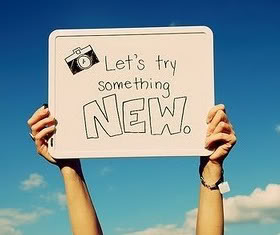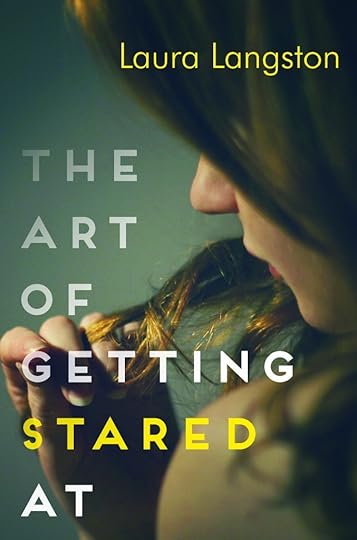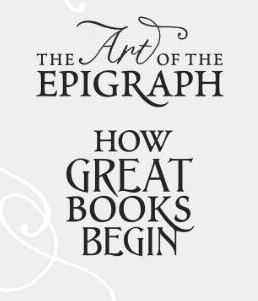Laura Langston's Blog, page 41
April 30, 2014
When Life and Writing Collide
 If life unfolded according to plan, I’d be writing this from a villa in the south of France while my personal assistant tracked the rise of my latest best seller on the New York Times list. The villa would be luxurious and clean, the pool refreshing, and my muse would be in high gear . . .
If life unfolded according to plan, I’d be writing this from a villa in the south of France while my personal assistant tracked the rise of my latest best seller on the New York Times list. The villa would be luxurious and clean, the pool refreshing, and my muse would be in high gear . . .
Okay, forget the fiction. In reality, if life unfolded according to plan, I’d be on the treadmill writing six hours every day and ignoring the dust, the dog hair, and the dirty dishes.
I’m not. I’m getting some writing done, and I’m doing it on the treadmill, but I’m being pulled in a number of stressful directions which is wreaking havoc on my routine.
A few weeks ago, Trace, the male half of Team Sheltie, had surgery to remove a lump that was supposed to be small, but ended up being much bigger than the vet anticipated. Recovery has been slow and he has needed careful watching, even wearing his fancy T-shirt to stop him licking the incision. Thank the Canine Gods the lump proved benign.
Then, just after Easter, my 89-year-old mother-in-law ended up in hospital. Last year she faced life-threatening surgery and was hospitalized for three months (That was a routine killer, let me tell you). She recovered and went home, but she’s been frail ever since. She has also relied on family to get her groceries and take her to various appointments. It’s no small commitment since we’re on the island and she lives on the mainland, about three and a half hours away. With this latest hospitalization, the ferry trips have started again as we wait for a diagnosis and prognosis. Though I’m concerned for her, I also recognize that we might be facing months of work disruptions and punishing expenses (thank you, BC Ferries).
And in case I’m not feeling committed enough, my mother is scheduled for two surgeries over the next six weeks. They’re relatively minor in the scheme of things, but she’ll require hands on support for a day or two afterwards, and I’m the chauffeur, caregiver, cheerleader.
Needless to say, I’m distracted these days.
Here are some thoughts on how to cope when life interferes with the best of (in my case) writing plans.
Focus more on less. Whether your job is writing or something else, when a crisis hits, zero in on what really matters. Your loved one. Your own health. If there’s time and energy left, pick one professional commitment that matters to you. For me, that’s writing. Everything else – social media, emails, reading blogs and professional sites – slides.
Prioritize. As soon as a crisis erupts, I mentally scan my professional ‘to do’ list and slash it in half. I determine what, if anything, must be addressed immediately. If I’m on deadline, that moves to the top of the list. I contact my editor and alert him or her to the situation. When my mother was hospitalized with a pulmonary embolism three years ago and I was on deadline for an article, I contacted the editor, explained the situation and asked for a few extra days to complete the assignment. She was very understanding.
Stay flexible. When my stepfather was dying from lung cancer, I found it difficult to produce fresh writing but I was able to focus on short articles. Though I wasn’t happy about it, I let the fiction slide for a few months. I’ve never regretted it.
Say no when you can. This isn’t the time to bake two dozen cupcakes for the school bake sale, or take on a rush assignment. And don’t be afraid to change your mind and say no when you previously said yes, particularly when it comes to personal commitments. People understand as long as you tell them what’s going on.
Keep going. As frustrating as it can be to have plans derailed, I’ve found some comfort in taking small steps. I might not be able to write 1500 words a day on my work in progress, but with half an hour I can read over the last scene and make a few notes in the margin. I can read up on my setting or research another aspect of the story. The novel may not advance as quickly as I’d like, but a few minutes a day on peripheral work can keep the story in my mind and make it easier to return to later.
Maintain healthy habits. Easier said than done if you’re spending a lot of time at the hospital or traveling to reach a loved one, but it’s so important. For me, that means eating high quality food, avoiding alcohol and sugar, and getting regular – and that means heart-pumping – exercise. Doing this helps me sleep, and that’s another thing to maintain during times of high stress. Good sleep habits.
Get organized. Maybe it’s just me but when life is chaotic, I take some comfort in having the basics under control. I like to have a fridge full of food, the laundry done, the grass cut. It’s not always possible, but spending a few minutes every week thinking about meals, for instance, frees me up to concentrate on what really matters.
And finally:
Everything is temporary. This too shall pass. Repeat as needed.
April 23, 2014
Overheard This Week
 ”I feel so grown up. I have so much debt.”
”I feel so grown up. I have so much debt.”
I was buying a bottle of grapefruit seed extract at the health food store this week when I overheard this comment behind me. I knew the speaker was a woman. That much was clear. But I was fuzzy on her age. Youngish for sure. Twenty or so, I guessed.
I was off by five or six years. The woman was very, very young. Probably just into her teens.
Her friend laughed. The two of them then proceeded to talk about how much money they owed parents, siblings, and several well-known retail clothing stores. About how much they’d need to borrow to buy their first car. To go to university.
It was a great reminder of how character can be shown through one’s relationship to money: how we value it, save it, spend it. But the relationship to money is also generational. I paid cash for my first car ($500 and, yes, it was a beater). I didn’t have a credit card until I was well into my twenties. My mother-in-law is 89 and doesn’t have a credit card, period. She pays cash for everything. She doesn’t believe in debt.
It may be easy for her, but it’s not easy to navigate life without some debt or a credit card anymore. Most homeowners start out with a mortgage. Many teens take out student loans to attend post-secondary institutions. If you get on a plane, in-flight services are often credit only these days. And booking that flight or ordering on line is usually impossible without a credit card or PayPal account.
I feel so grown up. I have so much debt. That comment really made me stop and think.
It’s unlikely credit cards will ever completely disappear. And no doubt debt, in one form or another, will exist until this rock we live on turns to dust. But I can’t help wondering if I’ll ever overhear someone say, I feel so young. I have absolutely no debt.
Wouldn’t that be a novel concept?
April 16, 2014
My April Reads
 Happy Easter everybody! It’s been a busy few weeks: getting taxes ready to file, pruning the fruit trees, turning garden beds. Along with garden and tax chores, I just finished up page proofs for The Art of Getting Stared At, and I submitted a partial book proposal to Orca for another in their Limelights series. They got back to me very quickly – in two days! – with a yes, we’d love to buy it. That’s the kind of thing a writer likes to hear!
Happy Easter everybody! It’s been a busy few weeks: getting taxes ready to file, pruning the fruit trees, turning garden beds. Along with garden and tax chores, I just finished up page proofs for The Art of Getting Stared At, and I submitted a partial book proposal to Orca for another in their Limelights series. They got back to me very quickly – in two days! – with a yes, we’d love to buy it. That’s the kind of thing a writer likes to hear!
On the down side, all the activity hasn’t left much time for reading. I’ve averaged about a book a week which is on the low side for me. But with Easter almost here, my sweetie and I are sneaking away for a few days. That means no taxes, no garden chores, no writing deadlines. Instead there will be books. Lots and lots of books.
Here’s what I’m reading right now:
On the Kindle: Waiting on You by Kristan Higgins
In My Bag: The All You Can Dream Buffet by Barbara O’Neal
Beside The Bed: Where’d You Go, Bernadette by Maria Semple
Books Read to Date in 2014: 27
April 9, 2014
Getting Out of your Comfort Zone May Help Your Writing
 I’ve been making an effort to try new things over the last while. Even things I don’t feel all that confident about. I’ve started using a rowing machine (my body isn’t impressed but I’m not giving up yet); I’m working on a short story which takes me miles out of my comfort zone; and I’m about to use Adobe Acrobat for the first time to go through a set a page proofs. Small things, all of them, but the research is clear: doing things differently or learning something new (regardless of whether it’s something significant like a new language or something small like Adobe Acrobat) increases our brain activity and could make us more creative, more energetic, more social and just all around happier.
I’ve been making an effort to try new things over the last while. Even things I don’t feel all that confident about. I’ve started using a rowing machine (my body isn’t impressed but I’m not giving up yet); I’m working on a short story which takes me miles out of my comfort zone; and I’m about to use Adobe Acrobat for the first time to go through a set a page proofs. Small things, all of them, but the research is clear: doing things differently or learning something new (regardless of whether it’s something significant like a new language or something small like Adobe Acrobat) increases our brain activity and could make us more creative, more energetic, more social and just all around happier.
I’m all for that.
As I learn and stretch and try new things I’ve noticed how much it impacts my writing and helps me see things from a fresh perspective. Writing short stories requires brevity which sharpens my skills. Learning to row has given me insights into a character who plays an important role in a young adult novel I’m writing. Understanding and implementing Adobe Acrobat reminds me of what it was like learning to work with the track change feature in Word years ago.
More than anything, though, change alleviates boredom. The ennui I was beginning to feel at the gym is all gone as I challenge myself on the rowing equipment. The stress I sometimes feel around writing (deadlines; word lengths; acceptance/rejection) doesn’t apply to the short story I’m flirting with. I’m writing it just for me. I’m not even sure when I’ll finish it. Given my tendency to set deadlines and meet them, having a more free flowing approach to a writing project is a new thing for me. It’s taking me totally out of my comfort zone.
And it’s a surprisingly happy place to be.
April 3, 2014
The Art of Getting Stared At
 Here it is! I’ve been waiting for months to show off this cover for The Art of Getting Stared At. Thanks to the talented folks at Penguin for doing such a wonderful job with this cover. I love it. I hope you do too.
Here it is! I’ve been waiting for months to show off this cover for The Art of Getting Stared At. Thanks to the talented folks at Penguin for doing such a wonderful job with this cover. I love it. I hope you do too.
I’m in the middle of reading page proofs for the book right now. I’m also exploring the possibility of doing a book trailer, which would be a lot of fun and a great learning experience since I’ve never done one before. With any luck, it’ll all come together.
Either way, the book is in its final stages and will be available in just a few months!
March 26, 2014
Writers – Watch Those Epigraphs
 I love quotes. I collect them like some women collect shoes, only mine aren’t organized in a closet. They’re scattered everywhere: in notebooks and in e-files; cluttering my desk like bits of verbal confetti; on slips of paper in my coat pocket (my yoga teacher prints them out for us to take at the end of class.) I haven’t stencilled one on my living room wall yet, like a good friend of mine has, because then I’d have to pick a favorite.
I love quotes. I collect them like some women collect shoes, only mine aren’t organized in a closet. They’re scattered everywhere: in notebooks and in e-files; cluttering my desk like bits of verbal confetti; on slips of paper in my coat pocket (my yoga teacher prints them out for us to take at the end of class.) I haven’t stencilled one on my living room wall yet, like a good friend of mine has, because then I’d have to pick a favorite.
I love quotes so much I post one a week on my Facebook author page, and, like many other writers, I generally pick one to start every novel I write. I’ve done it for years.
Last week I received an email from Penguin Publishing. “Had I,” the editor asked, “Obtained permission for the epigraph I’d selected for The Art of Getting Stared At?” The epigraph in question reads: We should not feel embarrassed by our difficulties, only by our failure to grow anything beautiful from them. Alain de Botton.
“I didn’t know I needed to,” I responded. I assumed the short quote fell under the terms of fair use.
I assumed wrong.
Okay, not completely, unequivocally wrong, but potentially wrong if the epigraph was ever questioned. And publishers run from the phrase ‘if it’s ever questioned’ like a cat running from hot water. In fact, the issue of using epigraphs is an extremely grey area. And publishers don’t like grey either (unless it pertains to shades thereof, and they’re the one responsible for publishing the shades thereof book).
Basically, as the Penguin editor explained it to me, they treat each epigraph on a case-by-case basis because there are so many variables (writer/editor Jane Friedman has written an excellent, more detailed, blog on this: http://janefriedman.com/2012/01/23/permissions/)
In my case, I was asked to contact Mr. de Botton and request permission to use his quote. De Botton is an extremely successful writer (Status Anxiety; The Pleasures and Sorrows of Work are two of his many titles), philosopher, and TV presenter. My anxiety around the pleasures and sorrows of my own work started to ratchet up. Would my email hit his spam folder? Be set aside by a publicist or a gatekeeper? What if my request was passed to his publisher? What if de Botton simply didn’t get back to me? All legitimate concerns and given the fact that I had a deadline, I was a little concerned.
But I wouldn’t know until I tried, so I fired off an email. Less than thirty minutes later, I had an answer from de Botton himself (and he lives in the UK so it was early evening when he received my note which made the quick turnaround all the more remarkable).
“I would be delighted,” he said. “How very kind.”
Not only did my anxiety float off like a dandelion seed on the wind, I was left feeling that I had done Mr. de Botton a favor, when, in fact, the opposite was true. He was being extraordinarily gracious and generous to me.
Thank you, Mr. de Botton. Your response was a reminder to be grateful, something you’ve spoken about before.
“Rather than getting more spoilt with age, as difficulties pile up, epiphanies of gratitude abound.” Alain de Botton.
March 19, 2014
Spring Starts Inside Too
 I don’t know about you, but I’m so ready for spring. And this week marks the day – Thursday, March 20th – when the hours of light and dark are equal. The vernal equinox. Here on the west coast of Canada, that means the days are getting longer and light levels are rising.
I don’t know about you, but I’m so ready for spring. And this week marks the day – Thursday, March 20th – when the hours of light and dark are equal. The vernal equinox. Here on the west coast of Canada, that means the days are getting longer and light levels are rising.
In many cultures, the spring equinox is observed as the start of the New Year. It only makes sense. Birds are nesting and starting families. Trees are leafing out. New beginnings are everywhere.
I’m in spring mode in the garden and in my office. Outside, I’m pruning the fruit trees. Inside, I’m editing (which really is another form of pruning) The Art of Getting Stared At. I’m sowing seeds: flats of basil and tomatoes and peppers for the garden, as well as some ideas I expect to form another short YA for Orca Book Publishers. I’m also giving some love (in the form of a ruthless overhaul) to a few old favorites that haven’t had a lot of attention lately – one bed in my herb garden, and an adult paranormal novel I may upload and release on my own.
New beginnings are a wonderful thing. Happy spring everybody.
March 12, 2014
Writing Books or Blowing Glass, It’s All a Process
 We spent a few days in Seattle last month and one of the highlights was visiting the Chihuly Garden and Glass Museum at Seattle Center. Dale Chihuly is something of a phenomenon in the glass world. His blown glass –everything from single bowls to massive sculptures and chandeliers in complex shapes and dazzling color combinations – is shown around the globe. Some of it remains in private collections, but much of it is displayed in places like the Victoria & Albert Museum in London, England, and in the lobby of the Bellagio Hotel in Las Vegas, Nevada. If you ever watched the 1990’s sitcom ‘Frasier’ psychiatrist Frasier Crane had a Chihuly piece on display beside his fireplace too.
We spent a few days in Seattle last month and one of the highlights was visiting the Chihuly Garden and Glass Museum at Seattle Center. Dale Chihuly is something of a phenomenon in the glass world. His blown glass –everything from single bowls to massive sculptures and chandeliers in complex shapes and dazzling color combinations – is shown around the globe. Some of it remains in private collections, but much of it is displayed in places like the Victoria & Albert Museum in London, England, and in the lobby of the Bellagio Hotel in Las Vegas, Nevada. If you ever watched the 1990’s sitcom ‘Frasier’ psychiatrist Frasier Crane had a Chihuly piece on display beside his fireplace too.
Chihuly has faced many challenges in his life (the death of his father and brother while he was in his teens; a head on collision as an adult that left him blind in one eye) and, like most artists, he’s not without his critics (who debate whether his work is art or craft; who criticize his move to hire others to blow the glass after a body surfing accident left him unable to do the heavy work). But Chihuly presses on, coping with his limitations, and ignoring the naysayers and critics. His job, as he sees it, is to show up and simply do the work.
The museum visit was inspirational. It reminded me that whether you’re creating a beautiful glass sculpture, a full-length novel, or a four course dinner, the real reward is in the doing.
Some pictures from our museum visit and some quotes from Dale Chihuly:
I never actually consider what I am, nor do I reflect much on what I’ve done, nor do I think too much about what I will do.
My well of inspiration never runs dry. Just working with the materials seems to bring forth the ideas.
I can’t worry about how the world will be received. People will respond in many different ways. If you could record the reactions, there would be tremendous variation.
I can’t understand it when people say they don’t like a particular color. How can you not like a color?
I want my work to appear like it came from nature.
Spontaneity is the one element I most strive for in my work.
I think all artists have to overcome criticism. Most artists who are successful, somebody’s there waiting to give you a hard time. I tend not to read a lot of the reviews.
Yeah, you have doubts. But you don’t want those doubts when you’re making the work. If you have doubts about work while you’re making it, it’s hard to make it. So you have to have some kind of vision about what you’re trying to do, and then while you’re doing that, you have to be very confident.
It doesn’t make any difference to me if the work is called art or craft or design. To me, the best of  everything is an art form. A movie can be wonderful art or it can be poorly made and purely commercial. If it moves people in some way, that’s what’s important.
everything is an art form. A movie can be wonderful art or it can be poorly made and purely commercial. If it moves people in some way, that’s what’s important.
Just take things as they come. We’ll see how this works out. It’s like a lot of good things. If you follow your heart, sometimes you get lucky.
March 5, 2014
My March Reads
 It doesn’t happen often, but yes, we do get snow on Vancouver Island. Ironically, the last couple of times we’ve had any real accumulation, it’s been near the end of February when the snowdrops are in full bloom. This time was no different. As well as snowdrops, the buds on my plum trees were swollen and pink, just days from opening, and the crocuses were poking out of the ground too. I was downtown when the flurries started and some of the tourists arriving from south of the border grumbled and shivered as they waited in line for cabs. This is nothing, I wanted to tell them. You should see what the poor souls in Winnipeg are dealing with. Out there, the ground is so frozen city officials are telling residents it might be June before it’s completely thawed. But it was too chilly to talk. So I pulled on my toque, whipped out my gloves and picked up my pace. Once my downtown business was done, I had important things waiting at home: Team Sheltie wanted to romp in the snow. I had a fire to build. And I had books waiting to be read.
It doesn’t happen often, but yes, we do get snow on Vancouver Island. Ironically, the last couple of times we’ve had any real accumulation, it’s been near the end of February when the snowdrops are in full bloom. This time was no different. As well as snowdrops, the buds on my plum trees were swollen and pink, just days from opening, and the crocuses were poking out of the ground too. I was downtown when the flurries started and some of the tourists arriving from south of the border grumbled and shivered as they waited in line for cabs. This is nothing, I wanted to tell them. You should see what the poor souls in Winnipeg are dealing with. Out there, the ground is so frozen city officials are telling residents it might be June before it’s completely thawed. But it was too chilly to talk. So I pulled on my toque, whipped out my gloves and picked up my pace. Once my downtown business was done, I had important things waiting at home: Team Sheltie wanted to romp in the snow. I had a fire to build. And I had books waiting to be read.
Beside the Bed: The One That I Want by Allison Winn Scotch
On the Kindle: Love in a Pawn Shop by Bonnie Edwards
At the Gym: Code Name Verity by Elizabeth Wein
Books Read to Date 2014: 22
February 26, 2014
The Ancient Art of Placement
 I was reminded of Feng Shui recently as I restructured my office to fit in the treadmill desk. Feng Shui is the ancient Chinese art of creating harmony in living spaces. Its literal translation means wind and water. It’s based on the principle that, like wind and water, you and your environment are two forces of nature, constantly interacting and influencing each other. When they’re in balance, chi or positive energy can flow which positively impacts our health, wealth and happiness.
I was reminded of Feng Shui recently as I restructured my office to fit in the treadmill desk. Feng Shui is the ancient Chinese art of creating harmony in living spaces. Its literal translation means wind and water. It’s based on the principle that, like wind and water, you and your environment are two forces of nature, constantly interacting and influencing each other. When they’re in balance, chi or positive energy can flow which positively impacts our health, wealth and happiness.
As simple as it sounds, the art of Feng Shui is surprisingly complex and doesn’t lend itself to a superficial approach. Feng Shui masters spend their entire lives studying the principles and helping others apply them. There are also various schools of Feng Shui which interpret and apply the rules differently.
I didn’t know any of that when I picked up a book on Feng Shui years ago. Back then, my office was a mess, and I thought perhaps the Chinese principles of Feng Shui could help. After all, as the book pointed out, many of us utilize the principles of Feng Shui without even realizing it. We arrange furniture in a certain way, decorate our living rooms artfully, and design gardens and ponds so they flow. Why not bring that same sensibility to the space where we write our books?
Here are some of the Feng Shui principles I introduced into my office years ago, and still utilize, to a greater or lesser extent, today.
* Simplify and declutter. Active chaos or temporary clutter (reference books or the visuals that pile up as we write) is the result of creativity in motion. But passive chaos or stagnant clutter – outdated papers or books not being used, old magazines and journals – needs to be eliminated.
* Your desk should be in your office’s commanding position. Ideally it should face the room’s entrance, but angled to the left or the right and not directly in line with the door. If that’s impossible, use a mirror to reflect the entrance door or, at the very least, hang a bell on your doorknob so you’ll hear someone approaching.
*Put the materials you use regularly within arm’s reach of your desk. If that’s impossible, gather whatever you need at the beginning of your writing session and have everything close.
* Avoid having an abstract painting on the wall in an area where you want to focus.
* Watch out for doors that stick. Feng Shui believes they can create sticky situations.
* Make sure your work area engages all five senses. This is critical for us as writers too. When you look up from your desk you should see something you love on the wall. Create a soundtrack for the book you’re writing. Add a scented oil diffuser to the shelf. Toss a throw rug with a beautiful texture onto the floor.
* Hang a crystal over your desk to stimulate the thinking chi and improve your work habits.
* Surround yourself with colors that personally resonate. The color blue activates the fifth chakra, or throat chakra, and can inspire creative writing. If that color appeals, put a few blue touches in your office. I’ve added red in my office to kick start my thinking. My desk is black and grounding, which is good for persistence.
* Keep a plant in your office and make sure it’s healthy.
* And finally, if you want things to change, relocate (or get rid of) 27 things in your working area. This is a powerful Feng Shui tool that can be used to sweep out the old and bring in the new.














